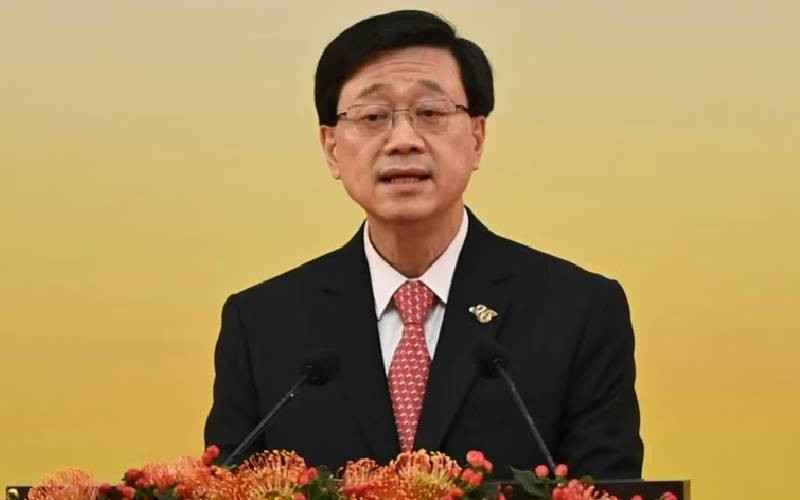Sidewalks whose cobblestones have been replaced by concrete, walkways wrapped in wire mesh, guarded campuses ... A year after the protests started, the face of Hong Kong seems forever transformed.
A year ago, on June 9, 2019, a crowd estimated at one million people paraded through the heart of the financial metropolis to demand the withdrawal of a bill which aimed to authorize extraditions to China.
The movement, which evolved into a general protest against Beijing's interference, lasted until December, with almost daily actions and often interspersed with clashes with riot forces.
Smothered by the coronavirus, the challenge is struggling to return to the streets. But these still present the stigma of an unprecedented mobilization since the handover in 1997.
Thus the Polytechnic University (PolyU) which was in November the scene of the most serious clashes.
Its imposing red brick buildings are now surrounded by thick plastic barriers filled with water, and guards verify the identity of anyone wishing to enter it.
Take advantage of street furniture
These white walls too heavy to be moved by demonstrators have pushed around all sensitive buildings such as the Legislative Council (LegCo, the Hong Kong Parliament), certain police stations, ministries and Beijing relays in the city.
Patrols now rarely have fewer than four police officers, who often wear their green riot gear rather than their regular blue uniform.
Many companies with Chinese capital, or accused by the demonstrators of supporting the communist power, kept on their storefronts these wooden protective plates hung when their windows were smashed by the most radicals.
The sidewalk pavers that had been used as projectiles were not replaced. They have given way to a uniform coating of concrete that cannot be used as a weapon. Some protesters had time to write slogans before it dried.
Many of the pedestrian walkways spanning the main arteries are wrapped in a mesh screen, to prevent objects from being thrown below to block the avenues.
"Throughout the protests of 2019, the demonstrators deconstructed the urban fabric, used urban infrastructure in the service of their fight," analyzes AFP Antony Dapiran, a Hong Kong lawyer who has written several books on social movements in the former British colony
"When it understood these tactics, the Hong Kong government acted accordingly, removing all the street furniture that the protesters were hijacking for the needs of their resistance and the barricades."
For months, there were no metal barriers left on the central reservation. The demonstrators were masters in the art of dismantling them in a few seconds with keys or screwdrivers-unscrewers to assemble them into obstacles of fortunes with great reinforcement of plastic collars.
Stay informed. Subscribe to our newsletter
For months, "Lennon walls" have also flourished almost everywhere, like so many colorful works of art in protest. They are still preciously maintained in areas fiercely hostile to the government.
 The Standard Group Plc is a
multi-media organization with investments in media platforms spanning newspaper
print operations, television, radio broadcasting, digital and online services. The
Standard Group is recognized as a leading multi-media house in Kenya with a key
influence in matters of national and international interest.
The Standard Group Plc is a
multi-media organization with investments in media platforms spanning newspaper
print operations, television, radio broadcasting, digital and online services. The
Standard Group is recognized as a leading multi-media house in Kenya with a key
influence in matters of national and international interest.
 The Standard Group Plc is a
multi-media organization with investments in media platforms spanning newspaper
print operations, television, radio broadcasting, digital and online services. The
Standard Group is recognized as a leading multi-media house in Kenya with a key
influence in matters of national and international interest.
The Standard Group Plc is a
multi-media organization with investments in media platforms spanning newspaper
print operations, television, radio broadcasting, digital and online services. The
Standard Group is recognized as a leading multi-media house in Kenya with a key
influence in matters of national and international interest.








